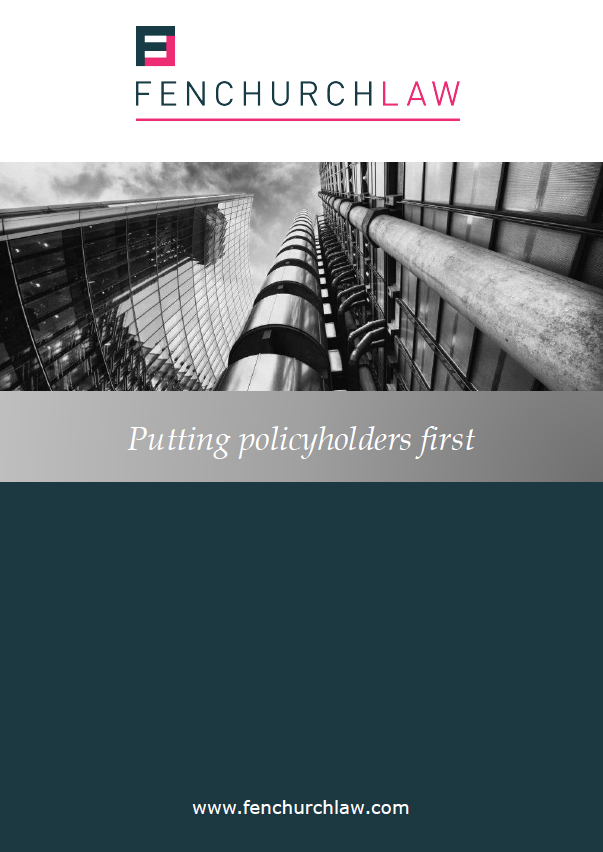
Building a safer future: the courts’ approach to fire safety cases
The Grenfell tragedy in 2017 has prompted safety investigations in myriad buildings across the UK, with owners and occupiers questioning whether other settings are similarly defective. Many disputes have arisen, with a handful of cases now determined following trials in the Technology & Construction Court. Overall the courts have adopted a robust approach to responsibility for cladding defects, rejecting typical defence arguments around scope of duty, causation and assessment of loss.
Recent Judgments
Martlet Homes Ltd v Mulalley & Co. Ltd
In July 2022, the claimant was awarded £8 million in damages to remediate high rise residential blocks in Gosport where a “StoTherm Classic” cladding system, including combustible expanded polystyrene insulation, had been applied to external walls during refurbishment in 2005 – 2008. This was held to contravene fire safety standards (the specification breach case), and the system had been defectively installed with inadequate fire breaks (the installation breach case). Costs incurred in removal and replacement of the cladding with a non-combustible alternative could be recovered, together with expenses of a waking watch fire patrol interim measure.
St James’s Oncology SPC Ltd v Lendlease Construction (Europe) Ltd & another
In October 2022, a company set up by Leeds Teaching Hospitals NHS Trust to deliver a new oncology centre was successful in its £5 million claim against Lendlease, based on fire safety and electrical engineering defects to an internal plant room. The defendants’ argument that derogation from applicable standards had been approved by all parties in a revised fire strategy document was rejected, given the overriding contract obligations: “Lendlease was at all times responsible for the design of the Works and for achieving compliance with the requirements of the D&B Contract, irrespective of any review, approval or comments made by Project Co and/or the Trust. This seems … to render the question of approval otiose”.
LDC (Portfolio One) Ltd v George Downing Construction Ltd & European Sheeting Ltd
In December 2022, the owner of student accommodation blocks in Manchester secured judgment in excess of £21 million for remedial works and lost rental income, against a specialist sub-contractor responsible for inadequate fire stopping/barriers, and composite cladding defects which led to substantial water ingress. The claimant and first defendant agreed to settle the claims between them for c. £17 million shortly before trial; the second defendant was insolvent and unrepresented at the hearing, which proceeded in any event as the liquidator could not consent to judgment being entered.
Performance Standards
The defendant contractors were in each case appointed pursuant to JCT Design and Build Contracts, with terms including an unqualified design and specification duty, obligation to comply with statutory requirements, and duty to exercise reasonable skill and care.
The judgments include discussion on performance standards and reaffirm the MT Hojgaard [2017] UKSC 59 principle, that – if there are two clauses imposing different or inconsistent design requirements, the courts are likely to interpret the less demanding clause as a minimum obligation, since treating it as qualifying the other clause gives a meaning which effectively renders the more demanding provision redundant.
The St James’s Oncology and LDC (Portfolio One) cases illustrate how bespoke amendments to standard form contracts may be used to improve prospects for recovery down the contractual chain, through “back to back” requirements for sub-contractors to indemnify the employer against liability arising under the main contract as a result of sub-contract breaches, and acknowledging that associated losses are within the parties’ contemplation.
Building Regulations
The analysis of statutory requirements is particularly illuminating, in view of ubiquitous disputes over interpretation of relevant provisions now acknowledged by the government to have been “faulty and ambiguous”.
In Martlet v Mulalley, the judge concluded that Approved Document B (“ADB”), Fire Safety, 2000 edition (with 2002 amendments) does not mean that whatever was not expressly prohibited was permitted and acceptable; and ADB, 2006 edition, marked a significant change in guidance from the earlier regime, with only materials of limited combustibility to be used as external wall insulation in buildings over 18 metres.
Further, the Building Regulations 2000, Schedule 1, B(4)1 requirement for external walls to “adequately” resist the spread of fire, having regard to a building’s height, use and position, turned on whether the contractor had followed guidance in BRE 135 (2003), which recommended that combustible cladding should not be used on high rise residential blocks unless it met the Annex A performance standard in accordance with the test method set by British Standard 8414-1. It was not sufficient to “blindly” rely on a British Board of Agrement (BBA) certificate for the cladding system.
Negligence
The selection and use of a cladding system with combustible EPS insulation in Martlet v Mulalley was in breach of the contractor’s obligation to exercise the degree of skill and care in its design of the work as would an architect or other professional designer.
In reaching this decision, the judge rejected defence arguments to the effect that they cannot have been negligent because everyone else was making the same mistakes. On a proper application of the Bolam principle, there must be “evidence of a responsible body of opinion that has identified and considered the relevant risks or events and which can demonstrate a logical and rational basis for the course of conduct or advice that is under scrutiny”. A defendant is not exonerated simply by proving that others were equally negligent (199 Knightsbridge Development Ltd v WSP UK Ltd [2014]).
Negligent design in relation to cladding works means that professional indemnity policies are likely to be triggered, and exclusions for contractual liabilities won’t usually apply.
Failure to comply with building regulations may be strong evidence of breach of a designer’s duty to exercise reasonable skill and care, in the absence of an express clause requiring adherence to statutory requirements, as discussed in LDC (Portfolio One).
Causation
Another defence commonly raised in cladding disputes is that enhanced fire safety standards implemented after completion of the contract works, and/or the changed regulatory perspective post-Grenfell, are the true cause of remedial action undertaken or proposed. This was rejected in Martlet v Mulalley, with the judge suggesting that an “effective cause” test would be more appropriate to a “but for” standard in this case, to avoid the claimant being left without a remedy.
Had the building owner succeeded only on the installation breach, it could have recovered the cost of repairing defects but not those of replacing the cladding. Both the installation and specification breach cases were upheld on the facts, so the owner was entitled to recover replacement costs.
Remedial Costs
In St James’s Oncology, the defendants’ argument that there was no intention to carry out remedial works was dismissed. The court is not normally concerned with how the claimant will use any damages awarded, providing the loss can be established, although intention may be relevant to the reasonableness of reinstatement and thereby the extent of loss. It was legitimate (and prudent) for the claimant to take account of commercial considerations and await conclusion of the proceedings before commencing planned remediation, given the defendants’ complete denial of liability until shortly before trial.
Remedial works to the Gosport towers were already complete when Martlet v Mulalley reached trial. Costs incurred are the starting point for what is reasonable in such cases, especially if works are carried out based on expert advice. The claimant has a duty to mitigate loss, “but the court will not be too critical of choices made as a matter of urgency or on incomplete information”. It is not sufficient that defects could have been rectified more cheaply; the defendant must prove the remedial scheme was unreasonable.
Further, the costs of temporary measures such as waking watch patrols are likely to be recoverable. The judge in Martlet v Mulalley dismissed the suggestion that this aspect of the claim was too remote, saying that any lack of awareness of the potential need for such interim protections in the context of combustible cladding was more reflective of a “culture of endemic complacency” than any reasoned assessment.
Where works of repair or reinstatement result in the claimant having a better or newer building than it would otherwise have had, a deduction for “betterment” will not usually be made if the claimant has no reasonable choice (Harbutt’s Plasticine v Wayne Tank [1970]). This includes betterment resulting from compliance with legislation introduced since the original works were carried out, imposing additional or enhanced standards.
Looking Ahead
The emerging direction of travel underlines the difficulty for designers (and insurers) in defending these types of claims.
The Building Safety Act 2022 provides further impetus on cladding disputes, introducing new causes of action for defective works and construction products, subject to a maximum 30 years’ retrospective limitation period. The Grenfell Inquiry phase 2 report is due for publication later this year, with Sir Martin Moore Bick’s findings expected to significantly impact upon the liability landscape, and potential manufacturer claims in particular.
Owners will look to progress claims swiftly in light of insolvency risks, with expert technical and quantum evidence crucial in justifying schemes of remedial work. Construction professionals with cladding exposures will be keen to extricate themselves through commercial settlements, whilst pursuing possible recoveries. Moving forward, contractors should endeavour to agree supply chains on back to back terms with their main contract, to limit exposures and improve prospects in the event of breach.
The courts’ focus on ensuring that buildings are made safe and compliant with current statutory requirements is closely aligned with public policy. Further developments in this area, including jurisprudence around Building Liability Orders and s.38 of the Building Act 1984, for example, are eagerly anticipated.
Authors:
Amy Lacey is a Partner at Fenchurch Law
Grace Williams is an Associate at Fenchurch Law
Other news
Fenchurch Law expands into Scandinavia with Denmark office launch
31 October 2024
Fenchurch Law, the award winning international law firm working exclusively for insurance policyholders and brokers,…



